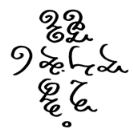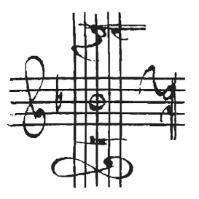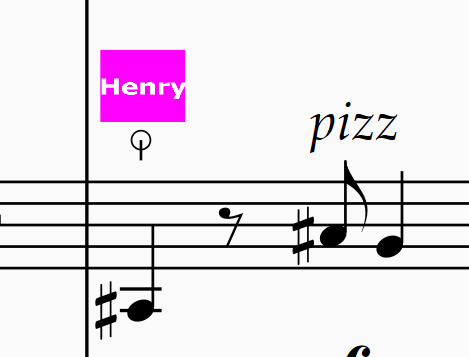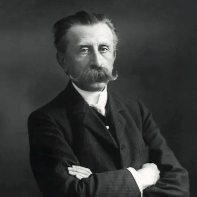Leaderboard
Popular Content
Showing content with the highest reputation since 03/29/2024 in all areas
-
Hi all! This is the second movement of my Piano Sonata in C-sharp minor. It is set in the relative major E major to act as an (apparent) counterpart of the furious first movement. Pentatonics and Locrian scale are added in the movement, but the motive of fourth from the first movement is important here as well. Here is the Youtube video link: Here is the pdf and audio of the score: Final Draft Piano Sonata no.3 in C sharp Minor 2nd Mov.pdf Piano Sonata no.3 2nd Mov.mp3 The movement is set in a rondo form ABACA. Here is the structre of the movement: 0:00 Introduction & 1st Refrain: The Locrian scale is used capriciously at the beginning by a confused Henry right at thr start of composing the movement when he didn't know why he used it but still retained it to see what would happen. The main theme (00:23) begins in a quite beautiful pentatonic E major. I love the German Sixth used in 00:53 and I absolutely love the C-sharp minor contrasting theme, as it's beautiful but at the same time coherent by using the falling fourth motive from the beginning of the 1st movement! (Btw it is quoted in parody in my joking fugue) It then unoriginally modulates to dominant B major. 01:32 repeats the whole process apart from some embellishments. 2:34 1st Episode: The beautiful (I think) 1st episode is actually composed the second last one, only before the last refrain. It's Chopinistic here, but I think it's quite beautiful! The theme is roughly the inversion of the 1st theme. I had the inspiration of this beautiful theme when waiting in a queue in my ex-company's canteen LoL! I love the counterpoint in 03:43 as well, again using the falling fourth motive. The C-sharp minor is never solved and merely forced back to E major with a quite beautiful G sharp major transition to the 2nd Refrain. 4:29 2nd Refrain: The first theme is turned to a bell texture which I must have taken inspiration from Brahms's op.117 and Prokofiev's Sonata no.6. The serenity proves short-lived as the mood starts to become agitated and the falling fourth motive starts to attack. 5:12 2nd Episode: The Locrian scale starts to disturb and the keys start to moving all around, again in 05:30 the agitation proves itself it is not going to be covered at all, and with octatonic modulation it ends on G minor which sounds like the beginning of Chopin's 1st Ballade in 05:41. The first theme enters in 05:53 but is only a false recap as the stirring continues once again in a semitone higher in a Schubertian fashion. The first theme re-enters in 07:07, this time in C-sharp major, the global tonic major but with undercurrent underneath. F minor disturbs once again as in earlier as well as the development of the 1st movement, and the Locrian mode is finally forcefully purified to a pentatonic. I think the retransition here is slightly abrupt and forceful. 8:16 Last Refrain: First theme appears with the purified locrian scale turn to pentatonic crystal in the upper register of the piano. The contrasting theme is set in F-sharp minor this time for the E major confirmation. The C-sharp minor is not answered at all again in 09:17, and only forcefully shut up, and the piece ends in E pentatonic. At least a momentary serenity can be achieved before facing the disasterous 3rd movement. This movement starts in 2023 June right after the completion of the 1st movement, but was abandoned since I had to focus on composing the 2nd movement of my Sring Sextet. Then after a personal crisis in 2024 I had no energy at all to compose, and I hoped to use this movement to pick up my creative energy. It succeeded and the movement is quite beautiful in my opinion. I expanded the movement from a ternary one to a rondo with the addition of the 1st episode and completion of the last refrain. The movement may sound too Chopinistic and less original, but I definitely pour my heart here. I just maintain the “write-what-I-want approach” in the whole Sonata without much thinking, planning, or trying to be original. I just don’t want my emotion disturbed by the chasing of originality when expressing my feeling is my ultimate concern in the whole Sonata. The recording is played by myself. I buy a new microphone I hope the recording quality will be better and not to be roasted by @chopin anymore! Feel free to comment or critize this piece below! I will be more than happy to hear any opinion whether it's positive or negative! Hope you enjoy it! P.S. Here is the link for the YC post of the 1st movement from the same Sonata: Henry9 points
-
So this is the final draft of the entire 2nd movement of my String Sextet. I can confidently say this is my best movement of music ever written up to date. The movement is divided into three parts: Lamentoso, Fugue a6 and the Return. The first two parts of the movements have been posted before in below links: Lamentoso: Fugue a6: If you want to skip to the newest content I compose, you may skip to 20:16. The musical analysis of the Lamentoso and Fugue have already been done in the link posted above so I won’t repeat it here. Here is the YT link and score of the movement: (Final Draft) String Sextet 2nd mov with last page.pdf Here is the YC post to the first mov of the same Sextet: Here is the structure of the movement: 00:00 Lamentoso The Eden in the 1st mov is great but man, come on and live in the real world. All sorts of tragedies happening and what ground do you have to claim the transcendence? I especially love the outburst in 4:59 and the passage starts from 8:53. 11:47 Fugue a6. This part is totally inspired by Vince’s @Thatguy v2.0 comment on my first movement “to write a dense fugue”, also to further explore the fugato in the 1st mov. Like @Giacomo925 said, this part summarises the sadness of the first 20 minutes of the movement. It always leaves me in awe that my favorite C minor passage, the absolute climax of the whole piece, lies in minute 30 exactly. The fugue aims to end on desperate terms but I won’t allow it. I try to give it a fight by recalling the pentatonic ideal even though in the wrong key of the tritone C major as hinted in the pentatonic section of the fugue, but the power is diminished. I need some purification for the paradise regained. Thx to @Luis Hernándezfor introducing me to tritone substitution in this part. The chant (22:01) begins with self murmuring of viola, occasionally inviting mysticism recalling 7:55 in Lamentoso and sadness of the 1st subject of the fugue. Two violas play together with the texture of a parallel organum. After a sad cry some more primitive power comes in to recall the passion and good of human beings, the theme is from b.27 of 1st mov. It gets agitated and experiences an epiphany in the form of Bartok Pizz. Both the chant and the folk melody is built around the 025 set! And the 025 set is the essence of the pentatonic scale! Furthermore a quartal chord is the further essence of 025 set, and hence the core of the whole pentatonic scale! Discovering this, the fury cannot be stopped. It leaves me in wonder how on earth can I write this thing out. After returning to the tonic key in 27:00, I decided to conceive it as a one off climax with build up. The idea is inspired by my playing of Beethoven’s op.110 when he did the same thing in the last movement as well. There is no “development” but only realisation of Tao in this imperfect world. There are appetizers to the ultra climax, first introducing the two most important themes sparingly, then in 27:16 theme in b.35 of 1st mov which is in fact inspired by my own Clarinet Quintet in C minor, and then an appetizer fugato responding to the lament in b.148 of the Lamentoso which is based on the opening theme. The entrée of Ultra Climax appears in 28:38, first is the first theme in tonic by first violin, viola, and cello, then second theme in C major by second violin, viola and cello. The playing of tritone is to prove Tao‘s omnipotence, also respond to the first mov and the fugue with the F# and C minor relationship. Using all 3 instruments for me is the resonance of Heaven, Earth and Human when they finally sing together the Tao they shared. I think I really feel the Chinese philosopher Tang Chun-i’s Realm of Heavenly Morality here. The modulation to Ab major, responding to b. 294 and 644 of 1st mov, complete what’s left undone there and finally Gb major is in triumph. A pedal point on a tritone is funny for me. The cello overlapping the violin is signifying earth and heaven interaction which is considered auspicious in Chinese classics I-ching. I am always in awe of the power exhibited here and wonder who’s actually the composer of this passage. The next passage in 30:07 is the heterophonic version of the 1st theme, which is where I was inspired miraculously by a Chinese music group. Next is the in extremis passage in 30:57. It’s the immanent version of the 1st theme. I was imagining what my friend’s thinking on his last day of life. The texture is probably inspired by the film music in Kurosawa’s Ikiru when the main character was swinging on the park’s swing to await his death. I quote Bach’s St. John Passion here for my friend’s name, and I find out that the lyrics fit too. I wish him to rest in peace and return to Tao. The final ending is probably inspired by the ending of Chopin’s Fantasie in F minor. I can never believe I would end the whole thing this positive in an absolute way. The whole passage always leaves me in tears. After writing the Lamentoso in May 2024 I had no power and inspiration at all to write anything in the Sextet since I was suffering in my full time job. I started picking up by working on the C# minor Piano Sonata first. After finishing that in Jan 2025 I felt like my negative power was expressed out, leaving the goods for this Sextet. I then went for a walk on 10 Feb 2025 and had a miracle, inspired by a Chinese music group, which turned on my creative power and I fervently completed the entire thing in just 18 days, when I had zero notes written in the past 9 months. It’s such a miracle I could have finished this piece this quick and good. My dedicatee Mr. Johnson Ho had already passed away last year. It's a shame that this piece couldn’t be completed when he’s alive, but I would be forever thankful for his inspiration. Special thanks must have been granted to my great friend Mr. Vince Meyer @Thatguy v2.0 for making this perfect audio and many ideas, and being a great friend, but I will leave it to the final version of the whole Sextet. Also a very special thanks must be given to my ex-boss. Thanks to her mistreatment, I have the pain to reflect on my own, the drive to finish the whole Sextet in a fury and the time to complete it when I was forced to resign for my own mental health. Foremost of course I must thank my dearest mum. But lol, the whole acknowledgement will be left to the post of the final version of the whole Sextet, including the first movement and this movement. This is a very long movement and commentary and I don’t expect anyone to listen and read till the end. But if you do so, here is my deepest gratitude to you. Feel free to comment as well, I would be very thankful to have received them. Thank you!!!!! Henry7 points
-
5 points
-
It's time for the annual Young Composers Christmas Music Event! The Brief Same as ever year - write anything inspired by a winter celebration (e.g. Christmas, Hannukah, Kwanzaa) or just Winter in general (or Summer for those of us in the Southern Hemisphere). If you want to participate, pop a comment below! You could have a look at last year's competition for inspiration if you like: As usual there are no prizes and everyone's a winner. You will however, be rewarded with a beautiful badge designed by our very own @PeterthePapercomPoser. Submissions are open now (8th December). Submissions will be included in this thread. There is no deadline, though preferably your piece should be done before Christmas or at least before the end of December. What are you waiting for? Get composing!5 points
-
Hi, this is my first advanced piano solo composition . Would love some feedback. Thank you.5 points
-
This Intermezzo is intended to be the first of four little piano pieces I intend to finish. I write this as relaxation piece after finishing the very heavy String Sextet which would be published in the near future. For me this piece contains some beauty and I hope to maintain simplicity in all four pieces. Here is the score and YouTube video: (Final) Intermezzo in A.pdf The recording is played by myself and recorded in a rush since it’s completely unplanned to record this one this quick haha. Feel free to comment on this one! Hope you enjoy! Henry4 points
-
I'm stil not done with my orchestrations, I will probably come to this section a bunch of times this year haha. What do you think? I believe I managed to portray a dark aura. I still don't know how to assign dynamics to the instruments, any advice for that so I don't have to rely on "mp" and "ppp" so much?4 points
-
Hey everyone, While I've been quite busy with university during the past year, I've started uploading some of my compositions to a YouTube channel, which I think better presents my music as a score-audio combo. They're all still computer renditions, but I hope to begin uploading my own performances these next few months (including of other works, mainly Scriabin). Here's a waltz that I originally wrote for one of those community-organised composition challenges on MuseScore, in which it was required that a note be repeated at least once in every bar of a piece. I ended up bestowing upon it the nickname "Waltz of the B(ee)s" for that reason and gave the score to my music teacher as a gift. Among all of my pieces, I think this is the one I'm closest to recording myself, so I'll update this thread when I'm ready!4 points
-
I thought I'd start a topic about everyone's repertoire that they're currently playing on any instrument you know how to play. Or you can share what pieces of music you're composing/working on right now. This topic is inspired by a series of messages I recently exchanged in which I realized that basically nobody on this forum knows about all the really corny pop songs I sing and play on the guitar! LoL So this first post will be dedicated to guitar music that I've been playing (although I also have other repertoire that I'm playing on other instruments). In roughly chronological order from oldest to newest: Bach's BWV996 Bourree in E minor - One of the first classical pieces I learned on guitar from my "Bach for Guitar" book. Originally for Lute. Bach's BWV Anh. 132 Menuett in E minor - Another classical piece I've been learning, more difficult than the Bourree. In the same book. "Downtown" by Petula Clark - I found this song in the movie "Panic Room" and have since fallen in love with it completely independently of the horrific movie. Some alternate chord shapes in this song let me play it easier rather than having to barre almost every chord. "Wedding Bell Blues" by Laura Nyro - a really old song that I fell in love with and posed a challenge because of it's chords. I modify the words to "Girl, I love you so..." when I sing it. The only problem I see with this song is finding an occasion where a guy would actually want to sing it to a girl! LoL "Maneater" by Hall & Oates "Wishing" by Electric Light Orchestra - ELO is my mom's favorite childhood band. This particular song has chords that were easy enough for me to learn and a cool whistle solo that starts and ends it. "Magic" by Pilot - the Scottish one-hit-wonder band Pilot's "Magic" is irresistible to me from the lyrics and emotional tone standpoint. And maybe I also relate to this song just from personal experience LoL. I sang this at a talent show two years ago. "Easy Lover" by Philip Bailey, Phil Collins "Heaven Knows I'm Miserable Now" by The Smiths - in my opinion The Smith's best song. It was a challenge to learn because of all the constant barre chords. But I've learned some alternate chord shapes to make it easier on myself. I love the lyrics. "Lovely Day" by Bill Withers - a song I got the hang of with some fussing around with different chord shapes on the guitar. "Faith of the Heart" by Rod Stewart - I found this song because it was the title song for StarTrek: Enterprise. LoL But it's also been used in a famous Robin Williams movie I forgot the name of. "Friends Theme" by the Rembrandts - the theme song from the famous TV show "Friends". This recording includes the 2nd verse which you never get to hear when the show is starting. "Like Humans Do" by David Byrne - I found this song a while back when it was included with Windows 95, 98 or XP (don't remember which). It has really funny words and tells a cool story. Some challenging chord shapes. "I Know You Know" by The Friendly Indians - the theme song to the popular TV show "Psych". The chords are easy and I've heard it so many times I decided I should learn it. "Used to be Young" by Miley Cyrus - I recently sang and played this at a talent show and won 3rd place! "The Heart Wants What It Wants" by Selena Gomez - great meaningful lyrics. "Chained to the Rhythm" by Katy Perry "Streets of New York" by Alicia Keys - I really fell in love with this song for the chorus and how it emphasizes the Subdominant. The lyrics are also full of heart. "Sex, Drugs, etc." by Beach Weather - I fell in love with this song because of its hypnotic chords and cool lyrics (and it's easy to play!) "Hometown" by Twenty-One Pilots - I love the whole album that this song is from but is probably the only Twenty-One Pilots song that I can easily play on guitar. "Hold on Forever" by Rob Thomas - a song I learned for an ex-girlfriend. "All the Stars" by Kendrick Lamar feat. Sza - a very seductive song written for the movie "Black Panther". I wrote a little commentary on the meaning of the lyrics in a creative writing workshop. "Never Enough" by Loren Allred - this song from the movie "The Greatest Showman" is full of emotional intensity and heartfelt lyrics. I still haven't seen the movie though. "Get Lucky" by Daft Punk feat. Pherrel Williams - a really simple but cool song with a dope mood. "Love on the Brain" by Noah Guthrie/Rihanna - this song is a challenge to accurately fingerpick each arpeggio. "Never Wanted Your Love" by She & Him - She & Him is Zooey Deschanel's band. Really heartfelt lyrics. "Ennui" by PeterthePapercomPoser - a song I wrote when I first started learning guitar in 2020 (also around the time I joined YCF! I entered this song in the 2020 summer competition) Some of these songs were picked by me because they had easy chords on guitar. Others because I have a soft spot in my heart for the lyrics. Some are just plain awesome. Some of the songs by female artists I picked because they set a certain emotional tone that I got attached to when listening. In some of the songs by female artists I changed the lyrics to make it more appropriate for a guy to sing the song (LoL). Feel free to share your own songs or pieces that you're currently working on! Or any composition that you're composing as well!4 points
-
As implied by its title, this arrangement was based off my Crab Canon (aka. Canon Cancrizans) a 3 in C minor ( • Three-voice Crab Canon in B minor.): Since its initial publication, it has been transported one half step upwards to accomodate for the ranges of the instruments involved in this double trio, with the full realization played by the Continuo harpsichord part (which may be omitted entirely on account of the extremely wide intervals between voices in certain invertible configuartions making it rather difficult to play). Enjoy! YouTube video link:4 points
-
Revisited this piece, after a few weeks off of messing with it. That always seems to give me a fresh perspective on things I've written, and helps me to identify areas where improvement could be made. I feel confident in saying that if I were to forget this piece, and return to it again, that I'd be happy with how it is in it's current state. As always, if there are any areas where someone with more expertise than I have is able to identify an issue or mistake, I'm all ears for the feedback! 🙂 Thanks, and I hope you all enjoy my little heartfelt piece of music Lamentation_-_Kyle_Hilton_UPDATED_with_Spitfire_Labs_VST3_Audio (4).pdf Lamentation_-_Kyle_Hilton_UPDATED_with_Spitfire_Labs_VST3_Audio.custom_score (1).mp34 points
-
Bagatelle in G major is a piece I composed in 2011. I was inspired when listening to Beethoven’s Bagatelle in G minor, op. 119 no.1 in my music lesson, and I immediately composed this piece that night in less than two hours. Here is the YouTube video and score of the piece: Bagatelle in G major.pdf The piece is in simple ABABCoda form. The middle section in C minor is probably due to my fervent love with Beethovenian C minor LoL! i revisit this piece because of @PCC ‘s showing of his manuscript in the discord group. I also wanna use this piece to test the new microphone I just buy. It sounds much better than my crappy phone, although with my bad recording skill this recording still has some tears in it. For me the piece is just a banal one, but not bad for a teen. I just wonder how do I transform from this level of writing to the piano piece ( ) in a year LoL! Here’s the Beethoven Bagatelle for your reference: Hope you enjoy this little piece! Henry4 points
-
I'm on a microtonal binge-composing streak and next I thought I'd try to use 1/6ths of a tone instead of just 1/4ths. I thought that Musescore Studio would have this capability built in as well but it doesn't. Instead, what I found works, and turned out to be a good enough compromise is using syntonic commas to lower or highten certain notes by about 20 cents. My goal was to use justly tuned minor and major 3rds in this which would necessitate lowering or heightening the equally tempered thirds by about 15 cents. If I had been able to use 1/6ths of a tone, I would be approximating that goal at 16.666 cents. But anyways, I wrote this invention for harpsichord as I've somehow fallen in love with microtonal harpsichord lately. There are in fact harpsichords built that can play microtones. Usually in 31edo they look like this: Edit: upon further listening and reflection I'm wondering whether this might not also have the character of an Allemande - a dance from a Baroque Dance Suite. What do you think? I would love to hear your input, observations, critiques or suggestions! Thanks for listening.4 points
-
Hey @Thatguy v2.0! A lucid, absorbing piece of orchestral music! The introduction of the melodic material is cleverly interwoven with counterpoint from multiple different solo instruments. And there's also some blues elements in the use of the b3 in a mostly major context. I love the effect at 2:40 and 6:26 where the trombones very slowly glissando up to the next chord. It really makes the harmonic changes so apprehensive. The piece is thematic and motivically driven. Only after multiple listens can I now really appreciate all the thematic and motivic elements and how they're developed. I like how the Piccolo brings back the main theme near the end at the 14 minute mark. The flourishing and cycling through various keys before the end is also very effective at bringing the piece to a satisfactory conclusion. Perhaps my favorite part is around 4:40. I also really like the pizzicato part at 8:38. Throughout the piece you overlap the entrances of various motifs in the different instruments. And they're all nonetheless clearly related to each other and to the main theme of the piece. It took a lot of work and dedication to write this 16+ minute orchestral piece and you should feel satisfied with your accomplishment! Congratulations and thanks for sharing!4 points
-
Hello fellow composers! I am very excited to present my newest work, the first Movement of my Sinfonietta No. 3! This opening movement is intended to be lighter in mood, with a simple structure. The plan is to eventually follow this with a slow second movement, and a fast third and final movement. I had a few goals in mind as I composed this, feel free to evaluate how well I achieved them: Focus on simple, memorable themes and motives Keep the overall structure simple, in this case A-B-A-B Write something in an unusual time signature (5/8) Have a greater emphasis on rhythmic elements. Evoke an overall lighter, fun mood. The movement is structured as A-B-A-B, with a brief introduction 0:00 - The Introduction presents the rhythmic motif, which is contrasted with a sweeping pentatonic melody 0:22 - The first theme is a soaring melody, first presented in the violins. A contrasting woodwind theme is presented, before returning triumphantly to the soaring melody, which then builds to a climax with the opening rhythmic motif 2:03 - The strings usher in a staccato melody in the lydian mode. The woodwinds then introduce a simple melody that floats above, with periodic hints of lydian dominant. The section builds to a bombastic climax, with the horns and trumpets soaring above the orchestra. 3:12 - The first theme returns, this time in the English Horn. The overall structure of this section remains the same, but with significant changes to the orchestration. The section builds to a climax again, this time more resolved. 5:26 - The staccato lydian theme returns, this time more urgent. The section builds to a climax in the horns and trumpets again, this time with an ominous bass melody underneath. The entire ensemble crescendos to fff to end the movement. As usual, I have several questions for feedback, feel free to answer as many or as few as you wish: What effect does the music have on you? Does in conjure up an image? Or an emotional feeling? Does it tell you a story? This can be the piece as a whole, or a specific part or parts. What was your favorite part? What was your least favorite part? How well do you think the motives are developed? Do you have any comments or critiques on technique, e.g. harmony, melody writing, counterpoint, orchestration, voice-leading, etc.? How do you feel about the overall form? Is it effective? Do you have any comments of the quality of the performance in the audio file? I really want this to be a decent representation of how the piece would sound if it were performed live, since it is unlikely it ever will be. Feel free to put your "conductor hat" on and critique the "orchestra". I have included a score and welcome any constructive feedback on its presentation. And if you're like me it's a lot more fun to follow along with the score. Are there any composers this reminds you of, that I might enjoy listening to? Thanks for listening, I hope you enjoy! If you liked something I did and want me to explain how I did it, feel free to ask. -gmm Score link: https://drive.google.com/file/d/1EnjEuPwdFr7Ep-f4SRH3BEMYTKxfxu48/view?usp=drive_link4 points
-
Hey everyone, Just wanted to share a piece that I recently finished. If you'd like some context and a musical breakdown, feel free to pop out the spoilers; if not, have a read/listen and let me know what you think. I'd like to get some feedback on this before I polish up the score!4 points
-
Hi everyone! Long time for posting my last composition here. I am going to post the Lamentoso from my String Sextet 2nd movement here finally. Here is the pdf, mp3 and YouTube link of the piece: Lamentoso from String Sextet Movement 2.pdf Henry_Lamentoso.mp3 Here are the previous posts from the String Sextet: First movement: And here is the fugue after this Lamentoso: Here is the structure of the movement: 0:04, b.1-33. Introduction, setting the heavy tone of the movement by immediately using the low register of the violas and cellos. Focus on the first three notes of the opening theme of the first movement, but in minor version. 1:35, b.33-60. Agitato. Use some polyrhythms and tremolos here for my agitation. The melody comes from the minor version of the opening theme of the first movement. I like the yearning from second cello and first violin here! 3:23, b.61-93. Più mosso. Variation on the arpeggiating figure of the first movement first introduced in b.19. The sudden modulation to C minor is to echo the C major modulation in the first movement, b.226, and also augur the C minor modulation in the subsequent fugue section. With a solo transition to the next section. 4:58, b.94-122. Agitato. Again features tremolo here but with metre as rhythm. At first it’s a variation on the first three notes of the opening theme, but in b.108 the theme from the next section is announced early. Modulate to dominant C sharp minor, my favourite key! 6:01, b.123-139. Tranquillo. A cello recitative against the bass notes and the fleeing upper strings. The theme here comes from the Db major of the first movement in b.115, again the minor variation . I quite like the texture here, since the cello is really beautiful in its high register con sordini. Modulate to F sharp major to the next big section. 7:05, b.140-198. Marked “doubtful” at first since it’s the reappearance of the original opening theme of the first movement but harmonized by strange keys and then surrounded by dissonant chords (b.148). Enters into Misterioso passage, maybe trying to find ways to connect back to the world of the first movement. Bartok Pizz. is used as a signal for something enlightened. B.179 starts my favourite section of the whole Lamentoso or even the while 2nd movement I have written so far. It augurs the subject of the fugue which comes next, but for me it’s honest and very beautiful when getting back to F sharp minor. Definitely one of my best passages ever written. 10:43, b.199-end. Coda and transition to the fugue. A recalled memory from the heavenly first movement, but laughed off by the evil sul ponticello 2nd viola. Exhausted, the music gets into the second big section, the six part fugue which I composed earlier. I’m afraid the structure is a bit disorganised, but I like how direct it is emotionally and the contrast it brings with the first movement and the subsequent fugue. I definitely write with my honest emotion here, even though it’s quite sad. Hopefully I’ll finish the whole movement and while piece soon! Hope you enjoy my sadness here! Edit: I forget to mention the audio is made by Vince @Thatguy v2.0! Thx my bro! Henry4 points
-
Hello everyone, long time no see. My life has been a mess lately. Anyways, I thought this piece would be a cool way to get back to posting on the forum. As the title says I don't know what title to give the composition, but it should be something somber and evocative. Also this is one of my compositions with the most elaborate textures even though the work is only 32 measures long. For more information feel free to leave a question. 🙂4 points
-
I wrote this one back in 2014 while exploring triplets in waltz form. Ten years later, I thought it'd be fun to revise and share it with you guys. It originally had a "Waltz" in the title, but I decided to change it to Étude Scintillante (or Scintillate Etude), which roughly means "sparkling study," since the high triplets remind me of sparkly stuff. If that makes sense. Hope you enjoy it!4 points
-
So anyway, the last time I tried to write a symphony was almost 8 years ago, and it was so terrible that it's now called Symphony No. 0 and we never speak of it. I was 15 at the time. I suppose (most) teenagers aren't generally known for writing great symphonies. But I recently tried again. This is now my Symphony No. 1. I just finished it today. It's in one vast, slow through-composed movement. I wonder if, as you listen, it is obvious who my main stylistic influences were. The entire piece is built from one motif, the three-note figure that bookends the whole thing of the rising leap followed by the falling step. I've been working on this for about six months. This symphony was the product of a lot of experimentation and often changing course on the fly. Not only have I never written this much slow music all at once before, but these are the largest orchestral forces I've ever handled, with the greatest variety of orchestral color at my disposal. It's also the first time in a while I have allowed myself the luxury of a harp, as previously I had always been wary of giving myself the opportunity to commit any of a number of common orchestration blunders. I'm enjoying the fruits of the new Muse Sounds I have gained access to by virtue of switching to Musescore. They're wonderful. They can be a bit buggy, but sometimes it's almost scary how human they sound. Curious about how this will be received.4 points
-
Hi all, This composition is called A Child's Walk. Over the years I have revisited the work .... this version (4th) and has some new transitions, orchestration and a brand new ending. Imagine a young girl going about her walk and encountering lots of interesting encounters along the way. She has a very lively theme ... which by the way is my cell phone ring! Mark Engraving still in progress .... A Child's Walk - 03-10-25.pdf3 points
-
What keeps you from reviewing more works? This could apply to works reviewed on YCF, YT, discord, Soundcloud or other social media where music is shared. The poll is public. Respond to this topic for me to add more options to the list!3 points
-
Hello people! I'm working on my next giant variations project. But, in the meantime Mike (@chopin) asked me to write an Arpeggio Etude for him for his upcoming Music Jotter Arpeggio feature exhibit. "Music Jotter just implemented arpeggios (for chords, or arpeggiated chords), and the video will explain the difference between an arpeggiated chord and non-chord arpeggios." The piece is short as I wrote it all completely in my small musical notepad that I carry around in my pocket everywhere I go. Let me know what you think if you have any suggestions, constructive comments or critiques! And thanks for listening. Edit: I'm including a 2nd rendition of the piece that Mike made for me using Music Jotter and 8DIO Steinway Grand 1969 sound samples. Thanks Mike! Edit no.2: Also, check out what I have to say about how I created this piece in Why I Compose Music on Paper. Arpeggio Etude.mid3 points
-
Hi Peter! For me it's because I have to focus in my own writings. When I compose insanely myself I can't review anything here since it will take some of my creative energy away. Only listening is ok, but to provide feedback I need that same creative power for composing. Reviewing is very helpful for my own composing, but only before or after a huge project. When I complete my Sextet which would be posted soon, I never experience a more ferocious composing like this one, so I cannot bare to waste any creative energy other than finishing it. Another reason I don't review some members is because they never reply or give reputation points to reviewers, let alone review other members' works (including mine!) themselves. Since I review because I wanna interact with the composer, if there is no interaction I would feel like my review is futile, therefore I won't review them. Henry3 points
-
Hi there I'm going to be recording some demos of new songs, but in the meantime I'm self-recording just to have them to pitch. I'd love some feedback on this and the upcoming songs, especially all you talented vocalists and lyricists. I'm really interested in improving my vocals. This is a quick recording, I'm really hoping for ideas on how to improve the melody or guitar parts since this recording won't be final. It's pretty simple, pop-ish chord progressions, nothing crazy. Even if you don't comment, thanks for checking out my music 🙂 *** Lyrics: I've no fear of the sea cause with you I can tread higher water even if we drift off with the breeze I'll go the wrong way with you * When we drive down the road I get lost in the way you direct us no matter how far we are from home I want the wrong way with you * When I get back from working I come home to karaoke and your voice fills the room an out of key symphony but I can't help it, I'm in love * I tend the fire at night the warm light dancing free all around us I wish the sun would never come up again so I can stay right here with you down the wrong road with you and I love the wrong way with you any other one just wouldn't do when you're here, wherever we are feels right inside and I'll always throw away the guide and walk, the wrong way with you3 points
-
In the Microtonal Invention, I only modified the 3rds of major and minor triads, although you could also modify the 3rds of the counterpoint. But if you go by the counterpoint then, as the piece progresses through different passages the tendency would be for the piece to get more and more out of tune in relation to 12 tet. I wanted to keep the piece basically in 12 tet and only modify choice tones to keep the best features of 12 tet which is good sounding perfect 8ves, 5ths and 4ths. Also, since major and minor 2nds are also compromised in 12 tet so that they can fit equally into the perfect 8ve, if you modified each interval in counterpoint to be more like just tuning, you'd get more and more out of tune especially if the scalar motion traversed larger intervals than the 8ve. Check out this video that @Henry Ng Tsz Kiu shared with me: Thank you! Yeah I was stoked to hear microtones in @Mooravioli's recent orchestral piece so I of course I decided I had to try it out!3 points
-
What better way to announce my new YC account than with my latest composition? This little piece took me around 10 hours of work and I consider it has the most luminous climax I ever composed and one of the most intoxicating endings I have seen for violin and piano duo. I make use of a completely new vocabulary that I never used before or not in such a structured way. Let me know your thoughts. I personally thing the fragment between measures 20-25 could be improved, but I'm not sure how.3 points
-
This is something I decided to work on for a very limited amount of time over the past two days for the Christmas Event this year! It's a variations piece on the famous Polish Christmas Carol "Gloria in excelsis Deo". Those eponymous words are actually in Latin, but the rest of the carol is in Polish, and I made sure to go in and include all the proper accent marks and special characters which is actually a little tricky to enter into Musescore. This is one of those rare pieces that I wish I had Cantamus for, since it would increase the realism of the piece to have the actual words sung, especially when the Tenors and Basses are in canonic imitation with the Sopranos and Altos. I would really appreciate any comments, critiques, feedback or even just observations that you may have. Thanks for listening and Merry Christmas!3 points
-
@Henry Ng Tsz Kiu Your words always mean a lot to me. I feel lucky that you stumbled upon this site and that you're always willing to share so much with so many. There are probably few members here that haven't heard some critique or advice from you, and you freely share without ever asking for anything in return. You first posted your giant clarinet piece here, and you had to wait months for anyone to say anything about your music until Daniel finally gave you perhaps the most in depth review anyone's ever written (I still remember him mentioning he needed a dinner break halfway through haha). And while you waited for even the smallest response, you gave your thoughts to damn near everyone. This place needed you, and even though it's traffic comes and goes, you were a fire when it was in a slower season. I noticed you've regained some vigor in your reviewing here lately, and I'm happy for that. I know your personal life was draining, and that caused a brief absence from me seeing your name scattered all throughout the forum. I'm very happy you're entering a new chapter with your career, and even more happy that your composing and performance goals have reignited. Your presence is cherished and admired here, even when we don't always show you how much you're appreciated. I'm very excited to hear your completed sextet, or new recordings of the piano music you work hard to perfect. It's always a pleasure to hear from you. Ah I stupidly forgot to give credit where credit is due! Here's the snap pizz in the score. Thanks, buddy 💋3 points
-
It's been a few months since i uploaded this prelude, and it finally has a fugue. Not much to say here, other than that I felt like using a few more fourths, sevenths, and ninths than you'd normally see in a three part fugue.3 points
-
@piajo @PeterthePapercomPoser @MJFOBOE @MantisToboggan, thanks for listening, it really means a lot to share a thought or two! Your words mean a lot, thank you 🙂 Suffering and death were what inspired this, and I don't know why this music full of optimism came out. Maybe it was my escape from it. Maybe it was a refusal to believe what was happening. Regardless, it's a part of all our lives, and although sad in the moment, it's as natural as breathing. There are some moments that felt incomplete to me. I could have tinkered with the percussion and harp all damn day, but in the end, I'm happy with how it turned out. Maybe I'll revise it at some point, and comments like yours will help when the time comes. But for now, I like how you commented as if reading a story, marking the highs and lows as you typed. Thank you for sharing your thoughts. This would have sat on my computer for years without you urging me to post. This was a lot of work that would have gone to waste if it weren't for you; you're a good man and good friend. Thanks Peter. Thanks for referencing a composer I didn't know! I love the piece you recommended, and thanks for listening to my music, I can for sure hear similarities with what I wrote. 🙂 My man, thanks brother3 points
-
I don't really have any criticism. I just wanted to share my thoughts as I listened the second time, because to me, this piece simultaneously plays contrasting elements really well! I get a similar feeling quite often (which I refer to as a "sinusoidal mood with varying frequency"). Though I generally don't listen to symphonies much (which is why I can't offer useful feedback), I liked this quite a lot! I really like the introduction. Starts off a little ominous or uncertain, and then seemlessly transforms into something ethereal and happy (which to me reminds me of music that could accompany a character's first few of a destination in a fantasy story), and back again! The grace notes did feel a little odd to me, like a jazzy or humorous element, but that might be a repercussion of system-generated sound more than anything else. Those contrasting elements continue in the next lighter section, and they still go together so well! The happier elements almost feel waltz-like, and the minor tones like a stumble or a hesitant step, if that makes sense. The Tutti(?) at 3:20 reminded me of a scene from HTTYD 2, again with that feeling of our character seeing a new and otherworldly destination for the first time. And then again at 7:04! I thought around 7:50 it would fall into a despairing mood for a bit, but no, that optimistic voice is there again! I really like that because I'm particularly fond of pieces of art that aren't pessimistic (assuming my interpretation is somewhat right). That bit of percussion around 8:35 felt incomplete though, which I think could be developed more as it sound a bit like a metronome, though it also works to give a "pausing" or trailing off effect. 9:20 onwards finally started to feel tumultuous, as if the emotions our character has bottled up are starting to leak out, and yet the optimistic voice comes again. In general, I really like the melody of the woodwinds at 10:42 and the strings at 11:36, and every repetition or variation of it is like a spark of joy or some form of comforting epiphany. I think around 12:50 onwards feels incomplete, as if it's either missing elements or is like a placeholder (relative to the rest of the piece), but the shift in the mood until 14:00 is a nice change! The melody I like comes again at 14:42 with its uncertain partner, nice, hehe. The ending is strong and turns sweet (I love the piano and the harp(?)), though it feels incomplete, as if something is unsaid. Overall, it's a lovely and interesting piece. Thanks for sharing!3 points
-
Hi Everyone, here is a first draft of a piece I am working. It is intended as background/atmospheric music and I've tried to make it more of a mood piece. Cheers! Aled Edwards Mood Piano Piece.mp33 points
-
I Wrote a Sonata for Rach (Sonata Quasi Una Fantasia in cis moll) - CelvinPiano Hello fellow musicians and music lovers, I am an 16 years old composer and I’ve recently finished writing a Sonata in C# minor, dedicated to Rachmaninoff, and I’d love to get some ears on it! If anyone is up for giving it a listen and sharing their thoughts or feedback, I’d really appreciate it. Anything from the composition itself to ideas on performance would be super helpful. And if someone feels inspired to perform it, that would be amazing! I’m open to chatting about that as well, and we could definitely figure something out if it resonates with you. Feel free to reach out if you’re interested, or if you know someone who might be. Can’t wait to hear what you think! Best, Celvin3 points
-
Please make sure you take the time to watch our 2024 Halloween Challenge video, featuring our 5 challengers! @AngelCityOutlaw @Layne @JohnElive1 @Jan-Frederik Carl @sned If you want to see more of these types of challenge videos in the future, help spread the word by subscribing, liking, commenting on the pieces, and sharing the video!3 points
-
Hello. My chronological journey of music brought me to Romanticism, in which I have been immersed for months. I study its methods, harmonies, etc... And that has led me to study also the neo-Riemannian theory, since many chord progressions are explained through it. I write some things practicing these concepts. This Consolation III (as there were two others already) is very much inspired by Liszt's, in its structure and some resources. I have also based it on a pop song whose harmony is fantastic. You have to absorb from all sources....3 points
-
So a bit of shameless self-promotion I guess, but my first ever album of orchestral music in a more classic-hollywood style, aimed at the adventure movie genre for TV and Film licensing is out now. I'm fairly amped about it. You can listen to it on all major music platforms: https://amadeamusicproductions.fanlink.tv/lost-worlds but at the time of writing, Spotify has it attributed to another guy with the same name, as I've not been on Spotify before now. I'm sure that will be rectified shortly. Anyway here are a few tracks from it on YouTube. Skim through it if you like and I'd appreciate to know which ones you like the most.3 points
-
Hello dear young composers. Here is my new trinket, composed for orchestra and solo trumpet. Samples, of course, (unfortunately)... I hope you like it!3 points
-
I share the above comments ... my first impression was a piano reduction of an orchestra score. Lots of wonderful ideas for an orchestra work ... with some attention to tempos. Mark3 points
-
This is intended to be the second part of the second movement of my String Sextet in G flat major, after the part of Lamentoso. These two parts are very different from the more fleeing and transcendental first movement as I hope they capture the sadness of the time and what I feel, before leaping back to the world of the pentatonics later, which would make the pentatonics more grounded. Here is the first movement of the piece: Here is the first part of the second movement of the piece, the Lamentoso, which is actually finished after this fugue: Here are the scores, the original version and a version with my own (painful) analysis on it: Final Fugue from String Sextet movement 2.pdf(With Analysis) Final Fugue from String Sextet movement 2.pdf And here is the youtube video: The piece is dedicated to Mr. Johnson Ho. The finishing of the fugue is prompted by hearing his worsening health, so I really want him to stay healthy. The inspiration of the fugue first comes from my friend Mike @chopin and my mentor David (I am very honoured to name him my mentor even though we have never met in real life since his videos form the skeleton of my composing skill. Go watch his analysis videos NOW!) said that the middle fugato section from the first movement is the best part of the movement. I was shocked since I believed it was the worst of the movement! Then my bro Vince @Thatguy v2.0 (who also makes this perfect audio) inspired me to write a dense fugue for the second movement, and so I challenged myself to write a six part fugue, since I feel like it’s not fully realised in the first movement. This is he most difficult I have ever written, but finishing it I now consider it my most beautiful work composed up to date. It’s so emotionally deep, even weirdly I feel zero emotion during the composition process, only calculating the counterpoint haha. I am so satisfied with the result. The fugue comprises of three subjects, all from the 1st movement. The 1st and 2nd subjects are from the 1st movement fugue’s subject, while the 3rd subject is derived from the opening theme of the Sextet’s first movement. Here is the plan of the movement (time according to youtube video): First part (00:03): First subject enters in each instruments, inversion introduced at . All of sudden C minor enters (01:55) and I quote my subject of the C minor Clarinet Quintet 3rd movement fugue here to intensify the sadness. Also kind of replying to the relationship of G flat major and C major in the first movement, but while freedom is shared there, now sadness is shared. Second Part (02:12): Second subject enters and the section features a saturation of stretti. The C minor section (03:56) comes in at and it’s my favourite section of the whole fugue. It’s insanely tragically beautiful here. Third Part: Third subject enters (04:58), first and second subjects combine in the manner of the 1st movement fugato. The intensity is kind of lowered after that insanely tragic C minor section, maybe kind of accepting and reflecting upon it, and it’s less saturated with the subjects. However things starting to get intensified, first the third subject is treated as in Bach’s Chorale Preludes when it is cut up and divided to four phrases alongside the other two subjects (06:29). The only pentatonic entry (07:16) arrives to kind of relate itself to the first movement and hints what will come at the end, but at the meantime it’s defeated by disappointment and the fugue ends in a doubtful manner, which will lead to the chant section. Hopefully I would finish the whole movement as soon as possible! Hope you enjoy the fugue now! Henry3 points
-
Hello @Sidewinder and welcome to the forum! There are probably two main concepts for the term "texture". The first is referring to whether your music is Monophonic, Polyphonic, Homophonic or Heterophonic. Monophonic music is made up of just one voice, like Gregorian Chant (or if there's multiple instruments involved, they'd all be doubling the same melodic line). Polyphonic music is where many melodies of equal importance are being played at the same time, also often referred to as counterpoint or countermelody, and a prime example would be any of Bach's music, especially fugues. Homophonic music is the innovation of the classical period in music history meaning the music of Mozart and Haydn and occurs when there's a clear hierarchy of importance between melody and accompaniment. Like often when in a piano sonata, the left hand has some accompanimental pattern while the right hand plays the melody (usually the melody is louder or brought out in some way). Finally Heterophonic textures occur when variations of the same melody are all being played at the same time or almost at the same time. The other way of defining texture is through tone color or orchestration. When a certain combination of instruments through playing together in some specific way create a unique sound or harmony or counterpoint, that is also a texture. For now I'll leave it at that. Thanks for your post!3 points
-
My entire life seems but a continual wandering, and perhaps the jury is still out concerning whether I am just lost or not! Either way, here is a little of what the Muse had to say about it. I hope someone may find some pleasure in it.3 points
-
Of course: A chord’s mediant is another chord whose root is a third apart (it can be a major or minor third), in this case, a chromatic mediant is mediant chord of the same quality as the original chord (Eg: C - E, C - Eb, C - A, C - Ab. Or: cm - em, cm - ebm, cm - am, cm - abm). However, this is just a simplification (sorry, this is a bit complex). Diatonic mediants (C - em or cm - Ab) share two notes (E and G in the first case and C and Eb in the second case); Chromatic mediante share only one note (Taking the huge list above, in order, the notes are: E, G, E, C, G, Eb, C, Eb) we also have double chromatic mediants, this share no notes, but are still a third away (Eg: C - ebm, C - abm or cm - E, cm - A) So: Diatonic mediants have their roots a third away, have different qualities and share two notes Chromatic mediants have their roots a third away, have the same quality and share one note Double chromatic mediante have their roots a third away, have different qualities and share no notes The uses of chromatic mediants could be to: prolong the tonic or a certain degree of the scale (this could be further explored by employing chromatic mediants a minor third away of minor quality so they can be chromatically altered to form a common tone chord of the first chord (Eg: C - ebm - cdim - C, where c dim is a common tone chord)); to “smoothly” modulate by going from a chord to its chromatic mediant and then twist the harmony even more; to abruptly modulate by resolving a cadence to its chromatic mediant, eliding the tonic (G7 - E, eliding the C in between) or to just come up with a different way to use it that sounds good to you. Chromatic mediants between minor chords sound eerie, chromatic mediants between major chords sound uplifting, but it also depends if they are a minor third apart or a major third apart. Just explore them and use your favourites. If you have survived this soporific music theory lesson, let me give you one more fact about them: playing four chromatic mediants all a minor third apart gives you an octatonic scale and three chromatic mediants a major third apart gives you a hexatonic scale Sorry if this was a bit too long3 points
-
This is great advice. My thoughts as well. I don't mind the C tonal center throughout for a shorter piece, but that's more subjective I think. Don't worry though, your piece isn't bad by any means. To me, your music is creative and shows you have an awareness to take advantage of your whole ensemble. Peter is right though; all that parallel motion will lead to really thin sounds, unless your parallel chords are all already chunky (7ths and above I'd say). For your next string etude, what if the focus was on counterpoint and a more full harmony? Contrary motion and all that? Nice work, and thanks for sharing!3 points
-
Here is a Minuet, which I recently composed. Apart from a classical style, there are also some elements of Nordic folk music. I would be very interested to find out what you think of it.3 points
-
Old Macdonald in the style of Tchaikovsky's 'Trepak' from his Nutcracker ballet. Trepak - Old McDonald.mid3 points
-
Sorry to break it to you, but listening to this, I'm getting many clues that you were scammed, because this does not sound real. Even if they had used an electric piano, there's no way their tuplets are that precise at that speed, there's like no dynamic nuance, and the dynamics rarely even match properly, and the pedaling sounds unnatural. Sounds like they took a midi and messed around with tempo changes. The piece itself is well written. The themes are memorable, they develop nice, etc., so well done. The main issue I have is the enharmonic spelling in the score makes it troublesome to read sometimes, so I'd suggest reading into that.3 points
-
This dialog is pretty much correct I think. There's a difference between writing something abstract and writing something unidiomatic and needlessly difficult. Hiding behind supposed goals of abstraction and complexity to excuse bad writing is not an easily definable thing, but like pornography according to the Supreme Court, "you know it when you see it" if you are a relatively experienced composer. My use of harp is very sparing, but that's roughly in line with how it should be used. As Thomas Goss (of OrchestrationOnline) says: decoration, filigree, support. The harp is like dessert, adding great delicacy to a thin texture but rapidly becoming stale if overused. Every orchestration challenge he issues stipulates NO HARP CONCERTOS for a reason: beginner composers see the double staff and get overexcited about what they (think they) can give the harpist, and wildly overestimate the instrument's real capabilities. At the end of the day the harpist has an ungodly difficult part that just gets drowned or forgotten in the texture. Let the harp do what it does best. The harpist won't mind if they have to sit and count some rests any more than my poor trumpet players will. They're paid to do that, so to speak. Notice that some of the most idiomatic harp writing I employ comes in the come una danza sections where I use glissandi and rolled chords - two extremely common and standard harp techniques to just add some background lush flavor to the texture. The exact notes played, insofar as they make the right chords, aren't important. The most I have the harpist do in a foreground role throughout the entire piece is that little dainty rising scale in the reprise of the danza. Again, decoration, filigree, support. To the other point, this work is actually not drawing on minimalism at all. The glacial note values are an emotional expression tool, not an attempt to simplify or pare anything down. My contrapuntal lines are actually fairly intricate a lot of the time even when the note values are long and the textures are thin.3 points
-
Wow, this is so great! You're a gifted writer, and I really love the fact that you took to heart your goal of constructing the entire symphony from the rising then falling motif. Brilliant execution of that. I admit I heard this when you first posted, but something this massive took a while with repeated listens to really figure out what I could even say, or what I even wanted to say haha. This is just bloated with drama, and a great introduction of your symphonic prowess. I've noticed that no matter what I'm writing, part of who I am and what my personal situation is leaks out into the notes. I'm curious how personal this is to you, since it's your first symphony "no.1" (😛)? It sounds so emotional that I'd have a hard time believing it was all puzzle fitting and theory crafting. I really enjoyed the overall arch of the dynamics. Even though it was slow, as you say, it had plenty of motion and variation within it that it wasn't a bother to me. But this kind of crescendo then diminuendo of the dynamics overall throughout it's duration was really cool, and helped make it cohesive as a one movement symphony. The melodies are all superb, it's so rich in emotional depth to me. I love how you're a phenomenal string player, but you didn't make this about the violin. The tossing around of motifs and careful planning of color balance was a treat. I also can't thank you enough for hiding empty staves, it makes it so much easier to read and much more worth a composer peer's time. I love this kind of discussion. THIS is what makes people better at composition. There's no right or wrong here, just opinions from talented people. I agree with Peter in a way. I'm not sure if he meant a literal scherzando, but a change in texture would be advantageous, especially for a one movement symphony. Right at M, I love where you go here. But I think this would have been the perfect spot to build your motif in a faster rhythmic way. I love the heavy drama here, the light-heartedness might not fit. But I found myself continuing to relisten to this spot, where it builds really massively and then ends solemnly. I just kept zoning out, and I think it's because I was so used to the slower texture that my ears wanted a change rhythmically. If this was movement 1 of a multimovement work, I think it's more than fine as is. But as a one-movement symphony, it may have been something to consider deeper, and definitely for future thought. Overall though, this piece of yours hits closer to my heart than you might know, as I'm almost done with a long symphonic work that's slower... and in the same key sig... and nearly as long... But I digress. 😄 Lovely music, wonderfully clean score, and congratulations on completing your first symphony! I've listened to this numerous times now, and can say that I'll reference this when I have my own orchestration or notation questions. Extraordinarily beautiful composition 🙂3 points
-
G'day fellas, Happy belated Easter! I must have composed this tune at least two years ago, but decided to rework it a bit. I'm not overly fond of it, I will admit but believe that it has the most distinctly Australian feel out of everything I have ever written. You might also notice some ragtime influence in it, too. I'm considering writing a middle section as well, and hence making the piece into a ternary form. Yay or nay? Cheers, Quinn Humoresque No 1.mid3 points

.thumb.png.8b5b433a341551e913a34392660bc95b.png)




















